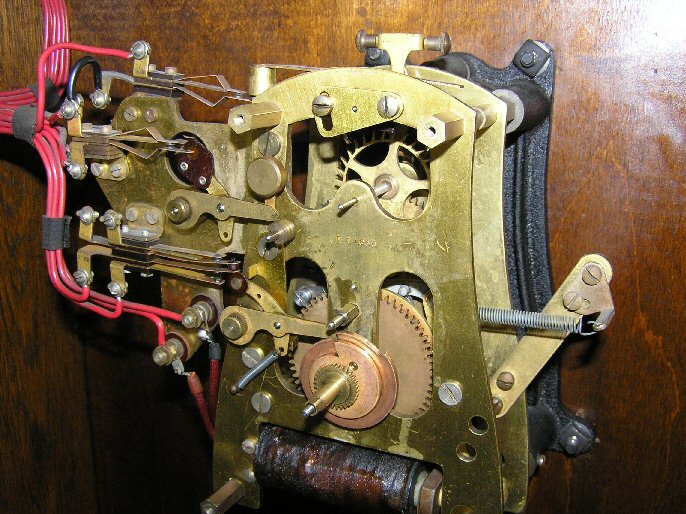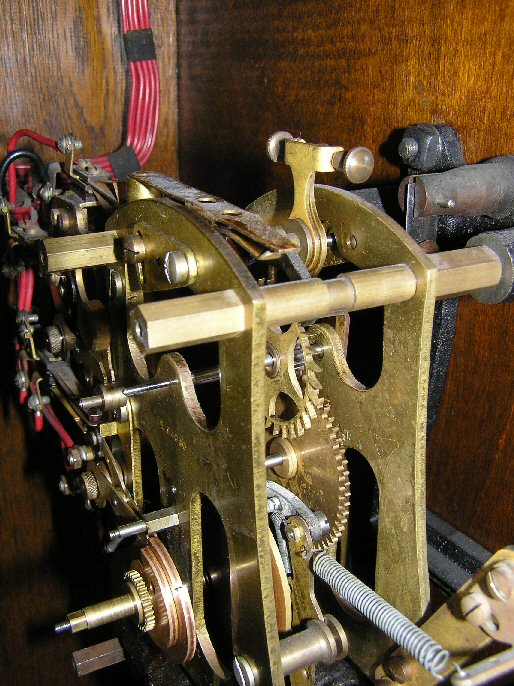The movement is well made using 1/8th inch thick hard brass plates with jewel cut bearings and stainless steel pinions. The escapement is the dead beat Graham variety to ensure good timekeeping. The pendulum rods are sometimes wood with a lenticular shaped bob, but on this example the rod is made of Invar to overcome the effects of temperature change on the clock. The solid bob was originally chrome-plated, but this has since flaked off with time, this being a common problem on these models.
The material from which this bob is constructed is uncertain though. It appears to be steel, yet literature of the time states Invar. Due to the difficulties of machining Invar and the cost of the raw material, I have my doubts though. My own clock's bob, judged by both its visual appearance (slight rusted pitting) and its performance on a clock timer, make me think it is steel. This is because of the day/night variation in timekeeping, fortunately this cancels out over the days and they are relatively good timekeepers. If anyone has the definitive answer to all of this, please make contact.
According to the sales literature of the time the clock is capable of keeping time to 15 seconds/month. After having observed the running of this clock for a few days on a Microset timer, it is my belief that if the movement is in good order and setup correctly, that figure can certainly be improved upon. In my own case however the clock, due to its physical size, is situated in a poor position that is not really conducive in the long term to top rate performance.

The contacts consist of a 2 second pair at the very top (see above) followed by the 1 minute contact below. The lowest contacts that are approximately in the middle of the movement are the 'Advance' contacts.
The minute contacts operate the magnet by way of a relay situated in the nearby control box. The advance contacts work in conjunction with the two second contacts to send pulses out to line to advance any slave dials. This could occur at daylight saving clock changes, or if the clock has been stopped for servicing. There is also a cam that only allows these 'advancing' pulses to occur in a 40 second period just before the hour (between 59 mins 10 secs & 59 mins 50 secs past the hour)






